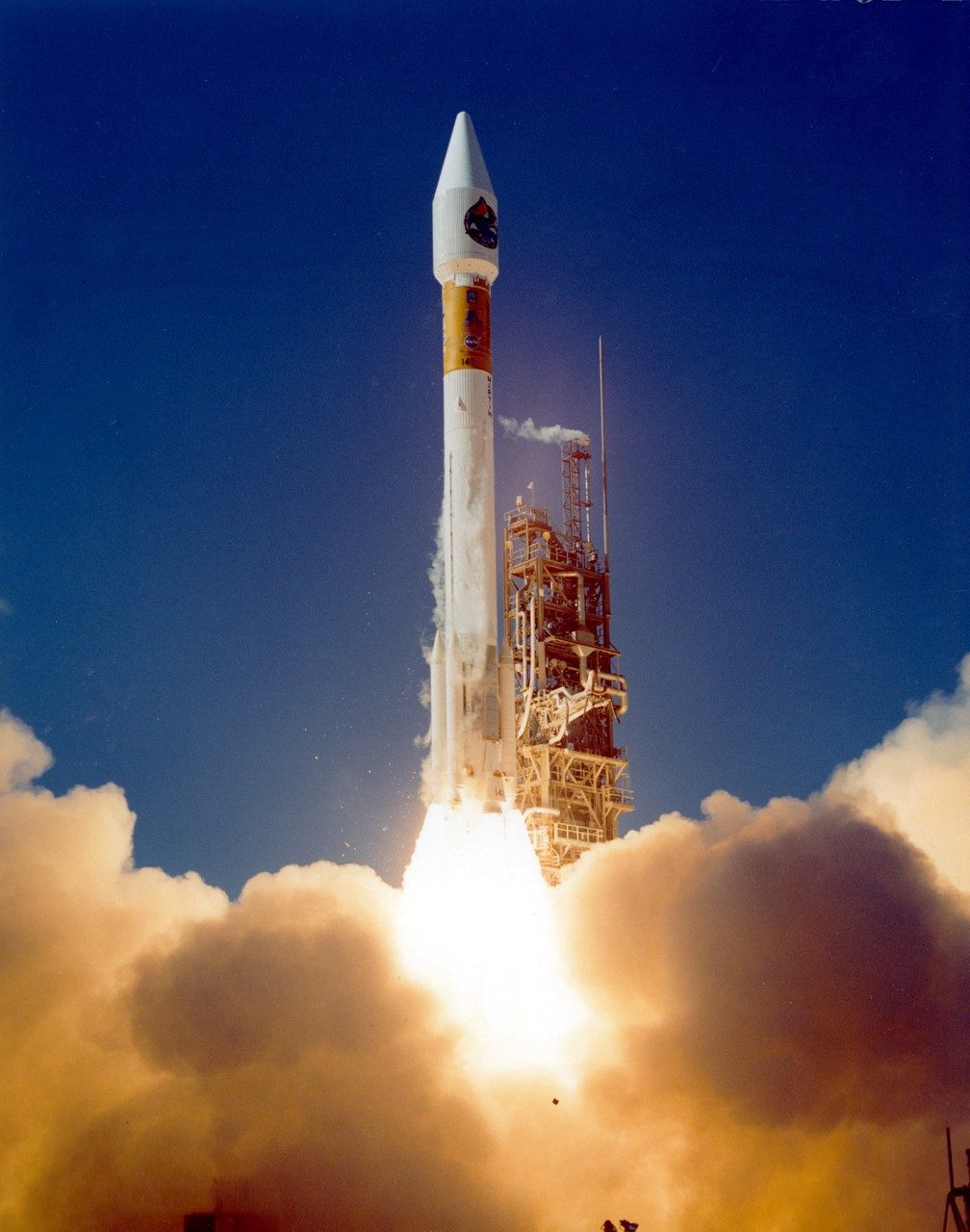Thin-skinned, but incredibly powerful. Lightweight, but capable of carrying a payload to the stars.
The Atlas family of rockets began their life in 1957 as the first successful Intercontinental Ballistic Missile (ICBM) launched by the United States, created by Lockheed Martin legacy company Convair’s design team. Facing rocketry’s biggest challenge—create a launch vehicle light enough to fly yet sturdy enough to carry thousands of pounds of fuel and payload—Convair engineer Karl J. Bossart had a breakthrough. Atlas’s lightweight, stainless steel skin would keep its shape in part due to the highly-pressurized tanks filled with rocket fuel. Without that pressure, the rocket would collapse in on itself.
The era’s most recognized rocket designer, Wernher von Braun felt that the Atlas would not survive the stresses of launch, calling it no more than a blimp. But Von Braun would be proven wrong.

Diverse Applications
Though initially designed to carry nuclear warheads, by 1958, an Atlas rocket successfully launched SCORE, the United States’ first communications satellite, which delivered President Dwight D. Eisenhower’s Christmas greeting to the world. The Atlas legacy has gone on to include science and exploration missions that have been fundamental to the understanding of space and the Earth itself.
On February 20, 1962, John Glenn and the Friendship 7 Mercury spacecraft were launched on an Atlas-Agena rocket. Ten minutes later, Glenn became the first American to orbit the Earth. Traveling more than 75,000 miles in just under five hours, he orbited the planet three times. By the time he splashed down in the Atlantic Ocean later that same afternoon, he was a worldwide celebrity and an icon of human spaceflight along with Yuri Gagarin of the Soviet Union.
By 1965, Atlas ICBMs were taken off alert status. But Atlas launch vehicles launched more than 100 scientific missions from 1960-1978, including Mariner 4’s flyby of Mars in 1964, which delivered the first up-close photographs of another planet. Atlas-Centaurs launched the Pioneer deep space probes in the early 1970s, which sent back information on Saturn, Jupiter and the farthest reaches of the solar system. Atlas launch vehicles have also placed national security, communications, Earth observation and weather monitoring satellites into orbit around the Earth, making it possible for our modern world to stay connected and protected through advancements in technology and communication.

Outliving the Cold War
Sources and Additional Reading
- Century of Flight. “Atlas.” http://www.century-of-flight.net/Aviation%20history/space/Atlas.htm, accessed July 27, 2012.
- Encyclopedia Astronautica. “Atlas Agena D SLV-3A.” http://www.astronautix.com/lvs/atlslv3a.htm, accessed June 29, 2012.
- Harwood, William B. Raise Heaven and Earth. New York: Simon & Schuster, 1993.
- Napier, Gary. Interview by The History Factory. June 28, 2012. Washington, D.C.
- Neff, William. “Friendship 7: John Glenn’s spacecraft and its flight.” The Plain Dealer.http://www.cleveland.com/friendship-7/index.ssf/2012/02/friendship_7_john_glenns_space.html, accessed July 25, 2012.
- RAND Corporation. “National Security Space Launch Report 2006.”
- Schefter, James. The Race. New York: Anchor Books, 1999.
- Underwood, Joan. Interview by The History Factory. July 16, 2012. Washington, D.C.
- United Launch Alliance. “United Launch Alliance Atlas V Rocket, with 200th Centaur, Successfully Launches Mobile User Objective System-1 Mission.”https://www.ulalaunch.com/about/news, accessed June 29, 2012.




